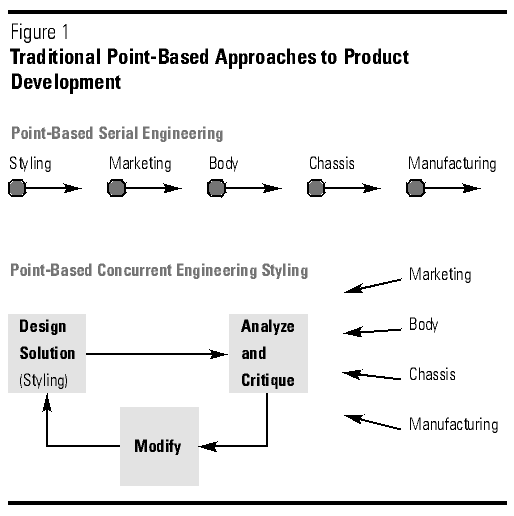Concurrent Engineering Design
Article on Design for Manufacturability. DESIGN FOR MANUFACTURABILITY ] This effective version of DFM will exceed cost goals in half the time by design. New: Leading-edge; Customized; Low-cost; Reach unlimited audiences anywhere; Schedule quickly; and Have time to work between4 four-hour sessions New article: DESIGN FOR MANUFACTURABILITY ARTICLE from the (2014, Productivity Press Copyright © 2017 by David M.

The office season 3 episodes. An earlier version of this paper appears in the proceedings of the 1996 American Society of Mechanical Engineers Design Engineering Technical Conferences, Design Theory and Methodology division (ASME paper # 96-DETC/DTM-1510).
Anderson Design for manufacturability (DFM) is the process of proactively designing products to (1) optimize all the manufacturing functions: fabrication, assembly, test, procurement, shipping, delivery, service, and repair, and (2) assure the best cost, quality, reliability, regulatory compliance, safety, time-to-market, and customer satisfaction. Concurrent Engineering is the practice of concurrently developing products and their manufacturing processes.
Concurrent Engineering Design Process
If existing processes are to be utilized, then the product must be design for these processes. If new processes are to be utilized, then the product and the process must be developed concurrently. Design for Manufacturability and Concurrent Engineering are proven design methodologies that work for any size company. Early consideration of manufacturing issues shortens product development time, minimizes development cost, and ensures a smooth transition into production for quick time to market. These techniques can be used to Quality can be designed in with optimal part selection and proper integration of parts, for minimum interaction problems. By considering the cumulative effect of part quality on product quality, designers are encouraged to carefully specify part quality. Design for Manufacturability can reduce many costs, since products can be quickly assembled from fewer parts.
Thus, products are easier to build and assemble, in less time, with better quality. Parts are designed for ease of fabrication and commonality with other designs.
DFM encourages standardization of parts, maximum use of purchased parts, modular design, and standard design features. Designers will save time and money by not having to 're-invent the wheel.'
The result is a broader product line that is responsive to customer needs. Click here for article on. Companies that have applied DFM have realized substantial benefits. Costs and time-to-market are often cut in half with significant improvements in quality, reliability, serviceability, product line breadth, delivery, customer acceptance and, in general, competitive posture. These practical methodologies are taught through Dr. Anderson's in-house.
He helps with implementation through his leading-edge. Designing Products for Manufacturability In order to design for manufacturability, everyone in product development team needs to: C In general, understand how products are manufactured through experience in manufacturing, training, rules/guidelines, and/or multi-functional design teams with manufacturing participation. C Specifically, design for the processes to be used to build the product you are designing: If products will be built by standard processes, design teams must understand them and design for them.
If processes are new, then design teams must concurrently design the new processes as they design the product. The Bad Old Days Before DFM, the motto was 'I designed it; you build it!' Design engineers worked alone or only in the company of other design engineers in 'The Engineering Department.' Designs were then thrown over the wall leaving manufacturing people with the dilemma of either objecting (but its to late to change the design!) or struggling to launch a product that was not designed for manufacturability.
11 rows What to Look for in the Best Interior Design Software As we evaluated interior design software, we focused on the following criteria: Room Design You need more than four walls, a ceiling and a floor to make a good room design. To be useful, interior design software requires several tools, chief among them an object library. Best professional interior design software uk. Professional Home Design Software. Home Designer Pro is professional home design software for the serious DIY home enthusiast. Enjoy the same type of tools that the professionals use for home design, remodeling, interior design, outdoor living, and cost estimation.
Concurrent Engineering
Often this delayed the both the product launch and the time to ramp up to full production, which is the only meaningful measure of time-to-market. Graphics card serial number. The Good New Days of Product Development Teams One way that manufacturability can be assured is by developing products in multi-functional teams with early and active participation from Manufacturing, Marketing (and even customers), Finance, Industrial Designers, Quality, Service, Purchasing, Vendors, Regulation Compliance specialists, Lawyers, and factory works. The team works together to not only design for functionality, but also to optimize cost, delivery, quality, reliability, ease of assembly, testability, ease of service, shipping, human factors, styling, safety, customization, expandability, and various regulatory and environmental compliance. The Importance of Early Concept & Product Architecture Decisions By the time a product has been designed, only 8% of the total product budget has been spent. By that time, the design has determined 80% of the cost of the product! See graph from the 1 The design determines the manufacturability which determines a significant part of the introduction and production cost (the 80%) of the product. Once this cost is locked in, it is difficult for manufacturing to remove it.